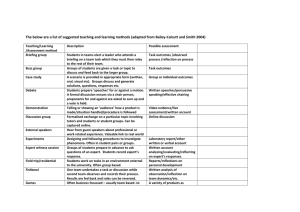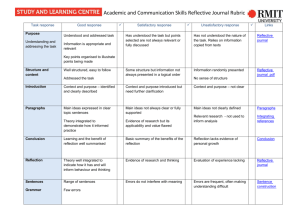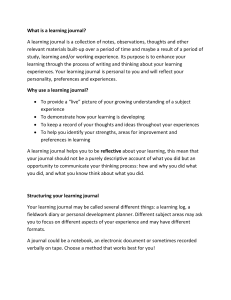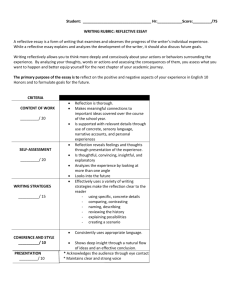Guidance on Student Self
advertisement
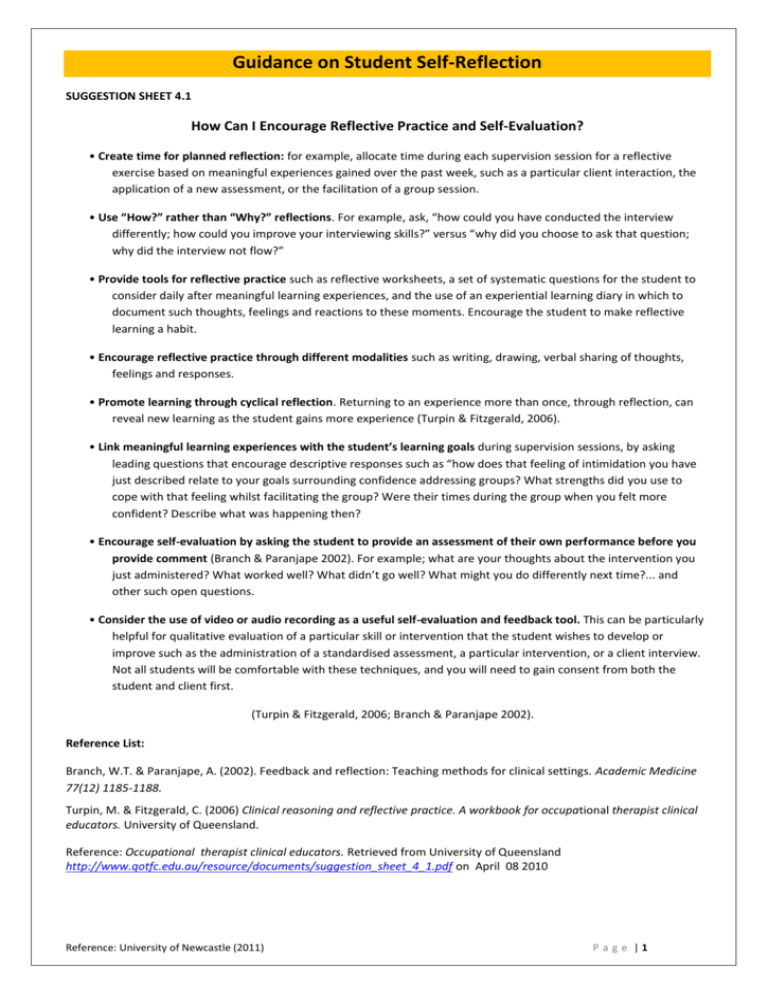
Guidance on Student Self-Reflection SUGGESTION SHEET 4.1 How Can I Encourage Reflective Practice and Self-Evaluation? • Create time for planned reflection: for example, allocate time during each supervision session for a reflective exercise based on meaningful experiences gained over the past week, such as a particular client interaction, the application of a new assessment, or the facilitation of a group session. • Use “How?” rather than “Why?” reflections. For example, ask, “how could you have conducted the interview differently; how could you improve your interviewing skills?” versus “why did you choose to ask that question; why did the interview not flow?” • Provide tools for reflective practice such as reflective worksheets, a set of systematic questions for the student to consider daily after meaningful learning experiences, and the use of an experiential learning diary in which to document such thoughts, feelings and reactions to these moments. Encourage the student to make reflective learning a habit. • Encourage reflective practice through different modalities such as writing, drawing, verbal sharing of thoughts, feelings and responses. • Promote learning through cyclical reflection. Returning to an experience more than once, through reflection, can reveal new learning as the student gains more experience (Turpin & Fitzgerald, 2006). • Link meaningful learning experiences with the student’s learning goals during supervision sessions, by asking leading questions that encourage descriptive responses such as “how does that feeling of intimidation you have just described relate to your goals surrounding confidence addressing groups? What strengths did you use to cope with that feeling whilst facilitating the group? Were their times during the group when you felt more confident? Describe what was happening then? • Encourage self-evaluation by asking the student to provide an assessment of their own performance before you provide comment (Branch & Paranjape 2002). For example; what are your thoughts about the intervention you just administered? What worked well? What didn’t go well? What might you do differently next time?... and other such open questions. • Consider the use of video or audio recording as a useful self-evaluation and feedback tool. This can be particularly helpful for qualitative evaluation of a particular skill or intervention that the student wishes to develop or improve such as the administration of a standardised assessment, a particular intervention, or a client interview. Not all students will be comfortable with these techniques, and you will need to gain consent from both the student and client first. (Turpin & Fitzgerald, 2006; Branch & Paranjape 2002). Reference List: Branch, W.T. & Paranjape, A. (2002). Feedback and reflection: Teaching methods for clinical settings. Academic Medicine 77(12) 1185-1188. Turpin, M. & Fitzgerald, C. (2006) Clinical reasoning and reflective practice. A workbook for occupational therapist clinical educators. University of Queensland. Reference: Occupational therapist clinical educators. Retrieved from University of Queensland http://www.qotfc.edu.au/resource/documents/suggestion_sheet_4_1.pdf on April 08 2010 Reference: University of Newcastle (2011) P a g e |1
